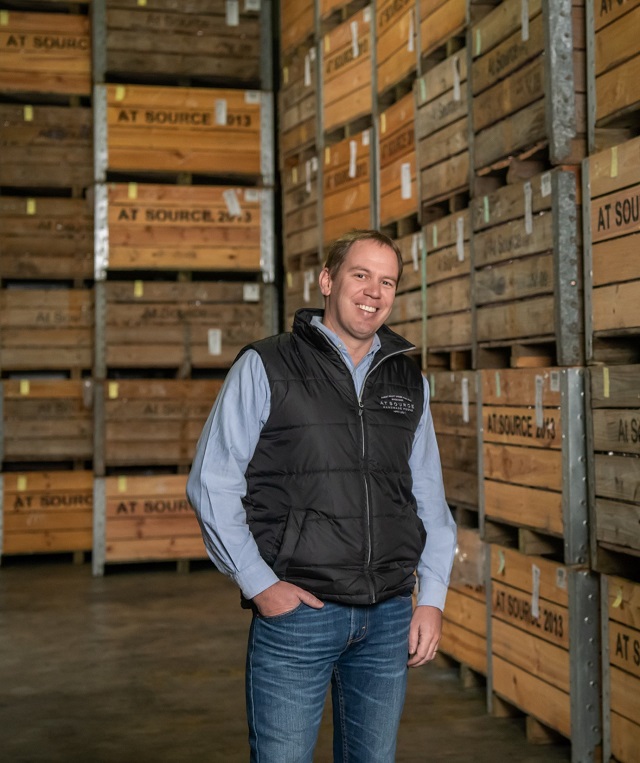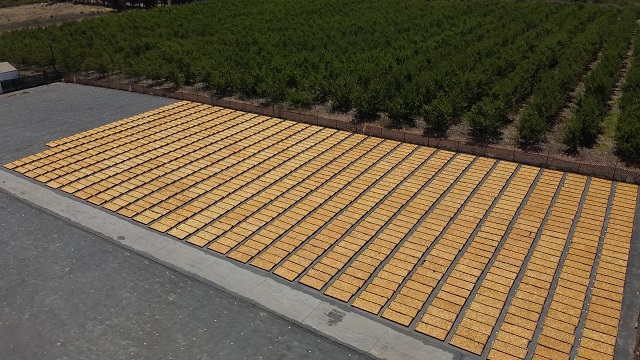Expert advice from international dried fruit production specialist Anton Erwee
The practice of drying fruit in Armenia originated centuries ago. Back in the 5th century BC Greek historian Herodotus mentioned the sun-kissed dried fruit that was transported by Armenian merchants along with wine and other products. Xenophon of Athens also described the dried fruit that Armenian peasants stored for winter. The tradition of dried fruits production in the faraway South African Republic is probably not as old as in Armenia. Still, South Africa is currently one of the world’s leaders in the sector, with around 100 types of dried fruit products exported worldwide – all the way from England to Australia. Within the frames of the Eastern Partnership: Ready to Trade EU4Business initiative implemented by the International Trade Centre (ITC) with the support of the European Union, Anton Erwee, international dried fruit consultant from the South African Republic has been providing consultancy to Armenia-based dried fruits producers for two consecutive years, helping them produce internationally competitive products and promote exports. Anton is currently the Chief Operating Officer at Source Handmade Foods (PTY) Ltd, which is one of the leading dried fruits production companies in South Africa. While on a study tour to South Africa within the frames of the EU4Business initiative local producers learned first-hand from Anton about the entire production process used there: from cultivation of fruit farms to processing, provision and sale of dried fruit.
Aravot.am has interviewed Anton on the competitive advantages, production and exports potential of Armenian dried fruits.
Read also
-What are the main Armenia-specific characteristics of dried fruit production?
Armenian dried fruit industry is noted for fruit varieties that are not widely produced and you will hardly find them in the European market. The Victoria plum is one such example. These fruit varieties offer a point of difference. Another Armenia-specific characteristic is that local companies producing dried fruit are relatively smaller in size which gives them an opportunity to focus on detail. The processing is also slightly different. The solar driers where the fruit is dried make the process very clean, keeping away all the dust. The majority of Armenian dried fruits are produced this way and it certainly gives Armenia another competitive advantage.
-What did you see as the main challenges in the local industry during the consultations?
The first thing, which I also mentioned to the Deputy Minister during my visit to Armenia, is the lack of industry coordination. Establishing an entity to act as a liaison between the Government and primary producers and promote Armenian dried fruits to the rest of the world will make a huge difference. Secondly, I would recommend having some form of tertiary education focusing on dried fruits. Promoting research and education on dried fruits production will find its way through the industry and foster its development.
-How would you assess the market competitiveness and export potential of the local produce?
The quality of Armenian dried fruit is excellent and there is an extensive potential for growth both within Armenia and beyond but at themoment this potential is not completely realised. Some Armenian dried fruit processors already have international quality accreditations and are perfectly positioned for export. With well-established ties and a customer base in the post-Soviet republics, they have the capacity to target markets beyond, which will potentially earn them a higher margin. As for the companies that are not completely ready for export, they need to work on getting a customer base, and international quality systems. Once this is in place, they can aim for international markets such as the US and the EU. The International Trade Centre is supporting these companies to bring their products in line with international standards and access new markets.
-What would be the selling point of Armenian dried fruit producers aiming at international markets?
The practice of drying fruit in Armenia has been there for centuries and this is what local producers should capitalise on when marketing their products abroad. Linking Armenia’s rich history, tradition, culture with dried fruit production will give them a competitive advantage. For example, brandy production in Armenia is perfect because it capitalises on the country’s rich history. And why not, Armenian dried fruit has the same potential to be as successful as Armenian brandy. Of course, it is going to take many years of hard work but eventually it will pay off.
-What are your recommendations to the local dried fruit producers who are aiming at international markets and specifically the EU?
My recommendation is to visit the export markets you are aiming at. For example, if you are aiming at the German market, go there, set up an appointment with a potential client/distributor and then their confidence. Step number one to winning confidence is showing your accredited quality systems. Our company has been doing business for twenty years supplying dried fruits to Australia, the UK, and mainland Europe. But we didn’t have a customer base in the US and it took us three years to access the US market. You need to be patient! As for international trade shows, if you want to be an exhibitor at one of these expos, make sure you are 100% prepared because you can have clients ready to place an order within a couple of weeks after the expo and failure to deliver the order might cost you that customer. Be ready with packaging, volume and quality systems in place. If you are ready it is an excellent platform to get new customers.
For marketing their products locally and internationally Armenian producers should also consider producing dried fruit products in addition to dried fruit itself to target a wider audience. In South Africa people often say “On no, dried fruit, this is for old people!” But this is not the case, you should get young people excited about dried fruit by marketing it as cool and healthy. Among dried fruit products targeting the youth and those leading a healthy lifestyle are dried fruit bars and candies, dried fruit smoothies, etc.
-Are there any recommendations for packaging? How should local producers package their dried fruit to make it more internationally competitive?
It greatly depends on the market you are aiming at. There is no recipe that works for all. If you consider the US market for example, your packaging will be completely different from that designed for the UK market. In the UK market packaging for dried fruits is transparent. A UK consumer wants to see the colour and feel the level of softness of the dried fruit being sold. Dried fruits in the Middle Eastern market, for example, in Dubai, are kind of over packaged with bright colours. Even packaging within the EU market differs. For example, German market is also over packaged, focusing on mixed, rather than stand-alone dried fruits. And it goes without saying that packaging should consider the moisture level and shelf-life of the dried fruit and recyclability of the materials used.
-Any tips for enhancing the export capacity of Armenian dried fruits, especially in times of the COVID pandemic?
COVID-19 has created massive opportunities for dried fruits production. The South African market is currently sold out. The main reason is that during pandemic people go for foods with longer shelf life such as dried fruits, canned food, etc. So, if Armenian processors are ready for export, it is the right time to access international markets with additional volume – from now to December.
-What is the key to producing quality dried fruits?
Fresh fruit is the key: farming and harvesting at the right time, making sure that the crop harvested is neither green nor overripe. In terms of processing, attention to detail is the key.
-What should the consumer focus on when picking dried fruits?
If you are in front of a supermarket aisle with a large selection of dried fruits and you don’t know which one to choose, the key things to focus on are the colour and the level of firmness. The consumer should pick the fruit that is nice and soft, easy to eat and has a vibrant colour.
A.H






















































